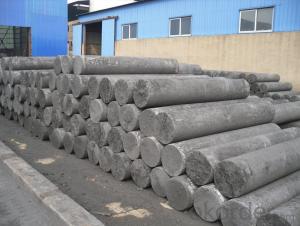When we talk about the heart of the steel industry, graphite electrodes take center stage. These cylindrical wonders are the unsung heroes of the metallurgical world, and their chemistry and material composition are nothing short of fascinating. So, let’s dive into the world of graphite electrodes, where carbon atoms dance in a lattice structure, creating a symphony of strength and conductivity.
Graphite electrodes are primarily composed of, you guessed it, graphite. But it’s not just any graphite; it’s special stuff. The graphite used in these electrodes is derived from high-quality needle coke, which is a byproduct of the oil refining process. This needle coke is then mixed with coal tar pitch, a black, gooey substance that acts as a binder. The mixture is heated and pressed into shape, creating a block of prebaked graphite. This block is then subjected to a baking process that removes impurities and increases its density, resulting in a material that is both strong and electrically conductive.
Now, let’s talk about the properties that make graphite electrodes so valuable. First and foremost, they have excellent thermal and electrical conductivity. This means they can transfer heat and electricity efficiently, which is crucial for the electric arc furnaces used in steel production. They also have high thermal shock resistance, allowing them to withstand rapid temperature changes without cracking or breaking. And let’s not forget their chemical stability; graphite electrodes don’t react with the molten steel, ensuring a clean and efficient steelmaking process.
But what about the different types of graphite electrodes? There are three main categories: standard, high power, and ultra-high power. Each type has its own unique characteristics and applications. Standard electrodes are the workhorses of the industry, providing a good balance of cost and performance. High power electrodes offer improved conductivity and strength, making them ideal for more demanding applications. And then there’s the ultra-high power electrodes, which are the crème de la crème of the graphite electrode world. They have the highest level of conductivity and strength, making them perfect for large-scale steel production.
The production process of graphite electrodes is a meticulous one, involving several stages of baking and shaping. The process begins with the mixing of raw materials, followed by the molding of the electrode precursor. This precursor is then baked at high temperatures to create the final product. The quality of the graphite electrode is determined by the purity of the raw materials, the uniformity of the mixture, and the precision of the baking process.
One might wonder, what happens to the graphite electrodes after their life in the furnace is over? Well, they don’t just disappear into thin air. Spent graphite electrodes can be recycled and used to produce other carbon-based materials. This not only reduces waste but also contributes to a more sustainable steel industry.
In conclusion, graphite electrodes are an essential component of the steel industry, with their unique chemistry and material composition playing a vital role in the production of steel. Their properties, such as thermal and electrical conductivity, thermal shock resistance, and chemical stability, make them indispensable in the world of metallurgy. The different types of electrodes cater to various needs, and their production process is a testament to the precision and care required in creating these cylindrical marvels. And let’s not forget their recyclability, which is a bonus for the environment. So, the next time you see a steel beam or a car body, remember the humble graphite electrode that played its part in making it all possible.

